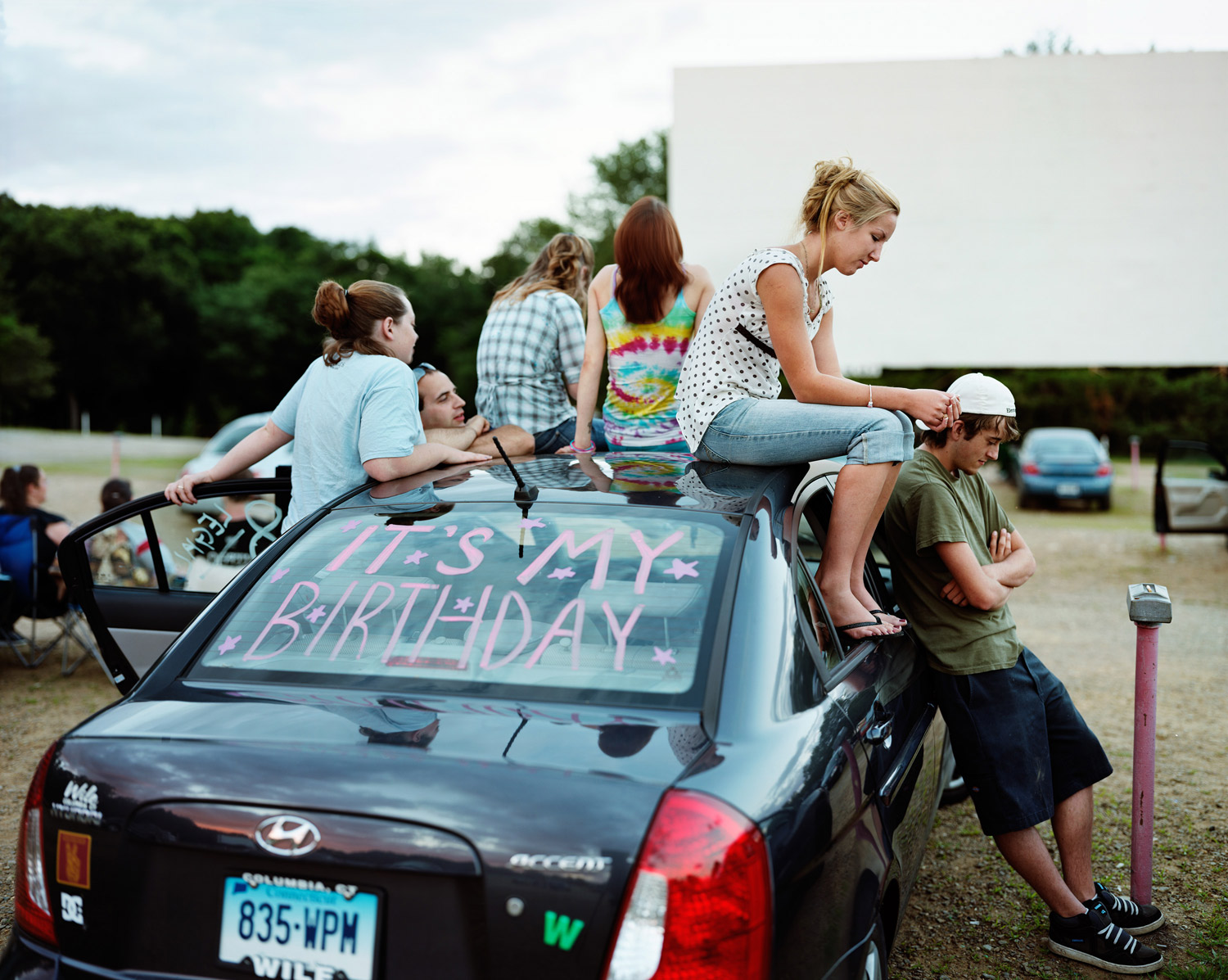
One way to capture the truth with a camera is to take the subject unawares, to freeze an event as it happens—a war, a wedding, a big game, a sudden catastrophe. Photographer Greg Miller goes after the truth in a different way. He studies his subjects, makes their acquaintance at state fairs, on gas station parking lots, at the drive-in. He figures out who they are and what they stand for. And then he frames them in way that illuminates something both essential and elusive at the same time. It’s like visual poetry.
In the age of megapixels and 10-frames-per-second, Miller works with an antique portrait camera and 8-by-10-inch negatives. In this series of images made at the Mansfield Drive-in Theatre & Marketplace near his home in Mansfield, Conn., Miller’s poem has to do with love and longing, cars and killing time.
“Once they’ve driven their car in, and get their popcorn, they settle into their nests,” says Miller. That’s when he walks up with his big camera on its tall tripod and gets to work.
Part of going to a drive-in movie is just waiting for the sun to go down. You might not know that, unless you are old enough to have fiddled with rabbit ears to clear the static from a warm TV. Drive-in movies have been fading away for decades. Yet, as these pictures show, some things never change.
—David Von Drehle
View more of Greg Miller’s 8×10 large-format portraiture on his website.
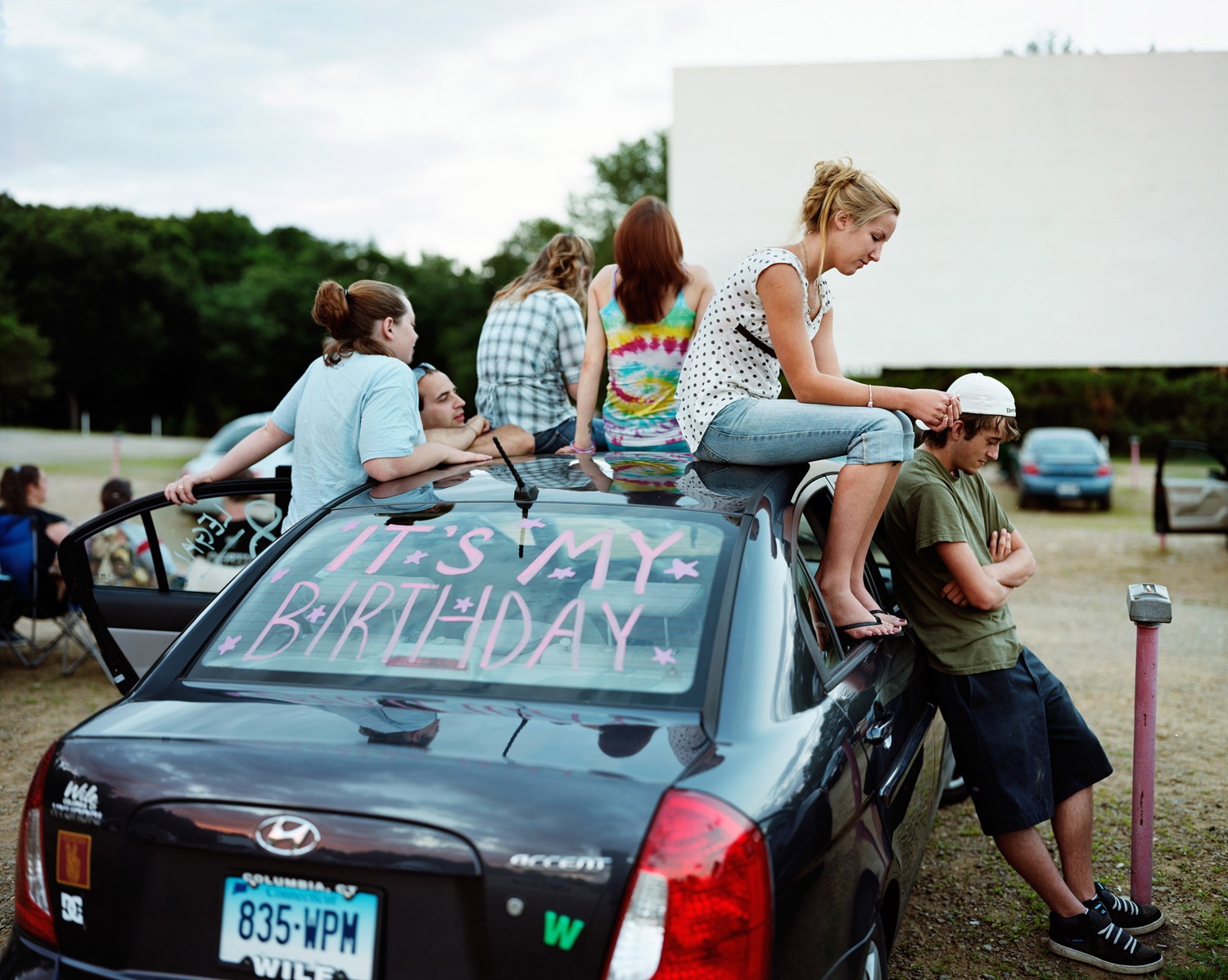
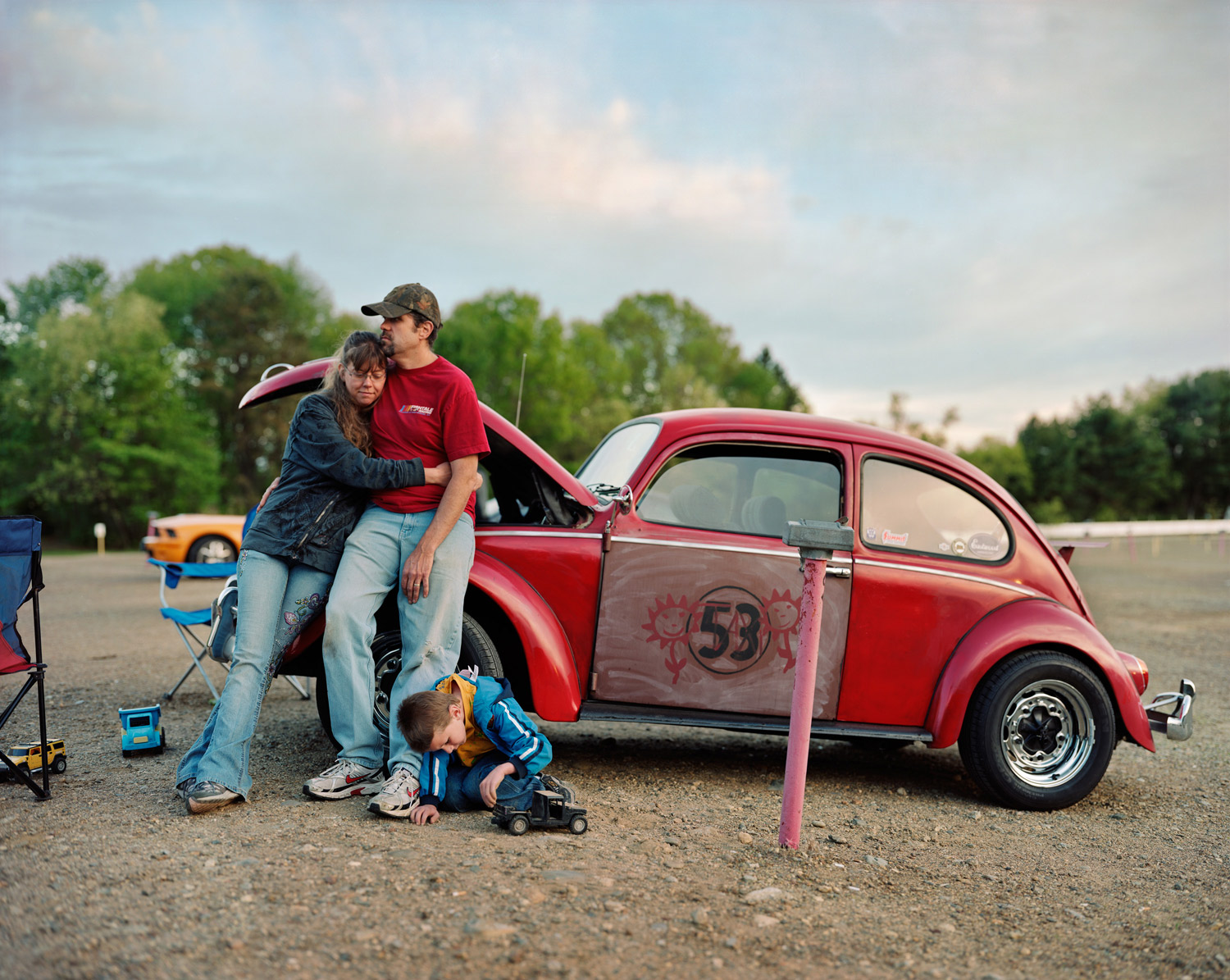
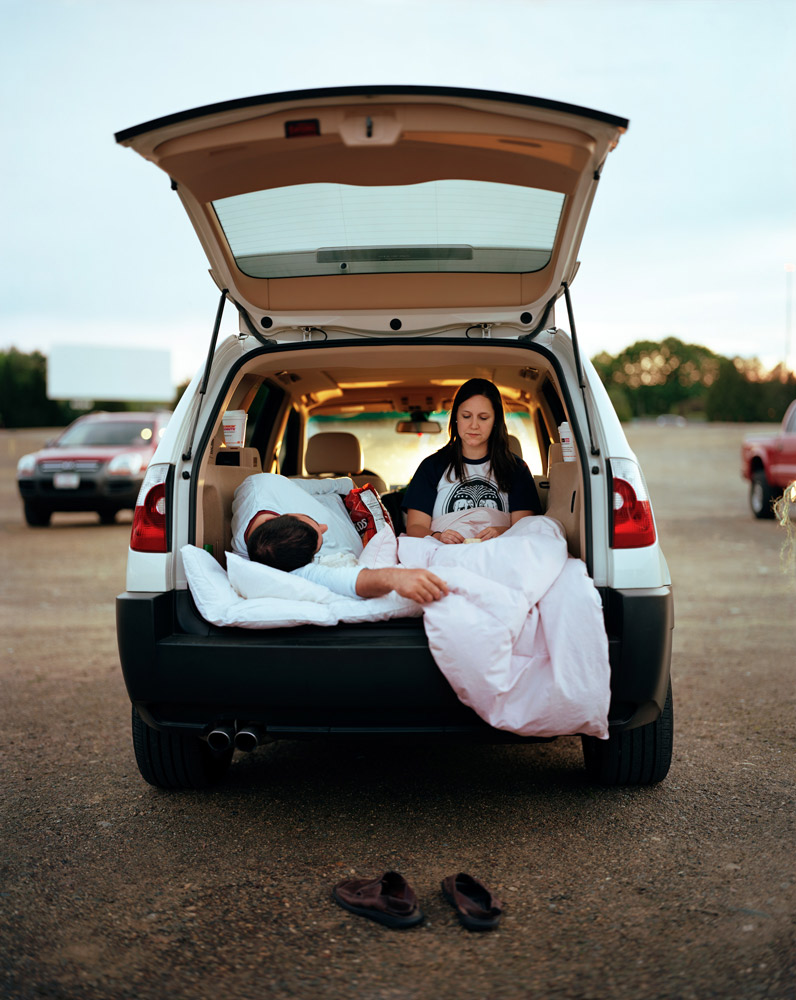
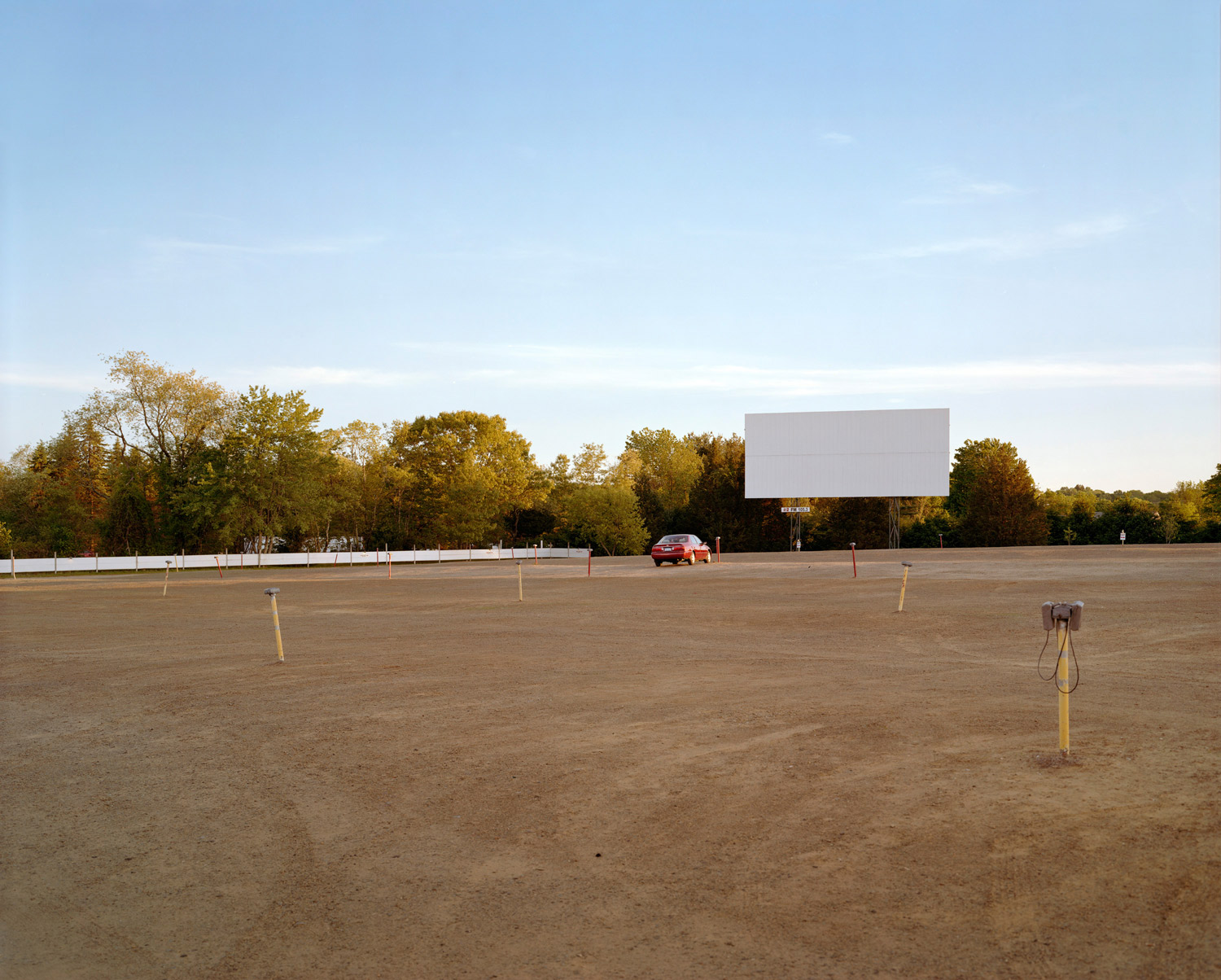
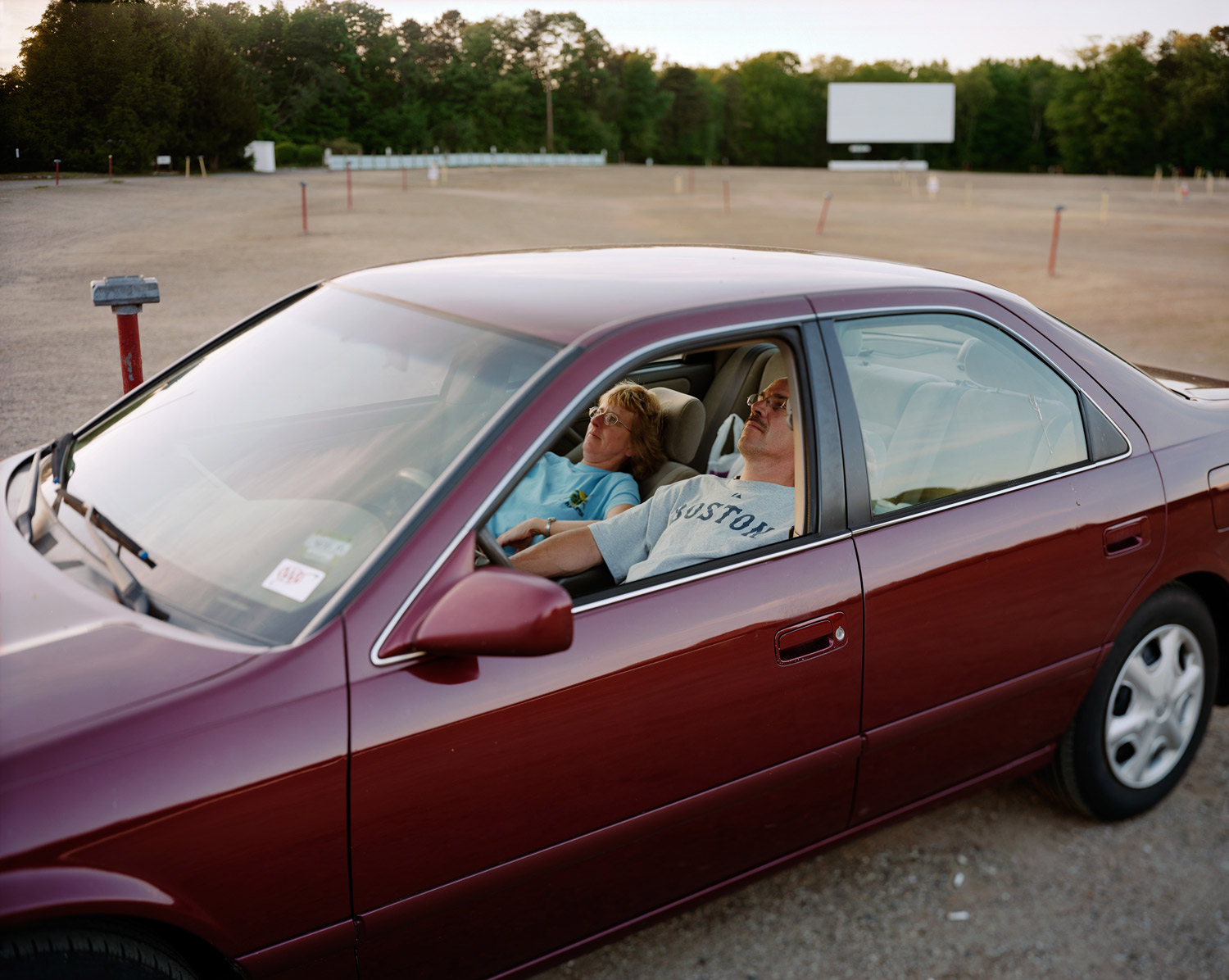
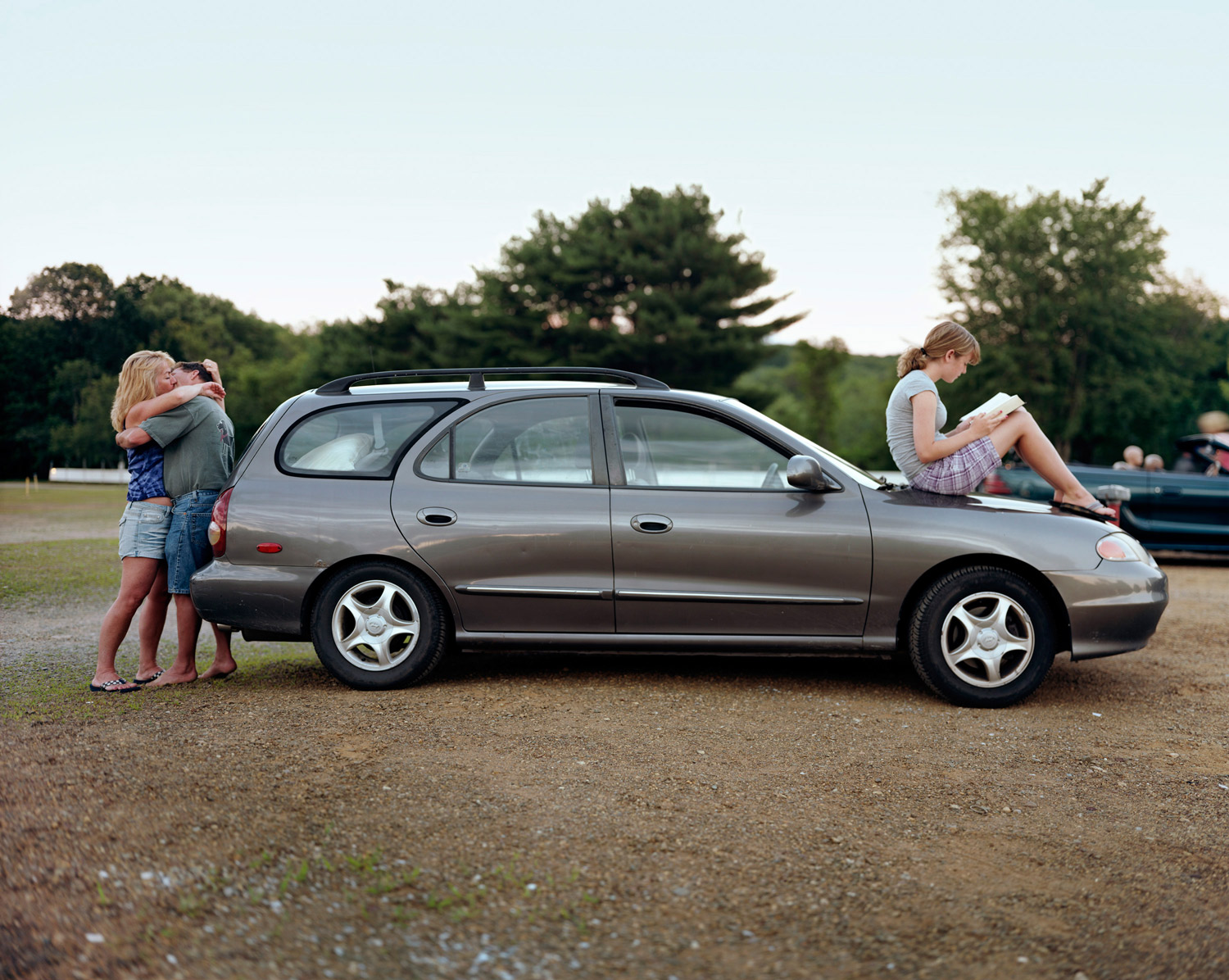
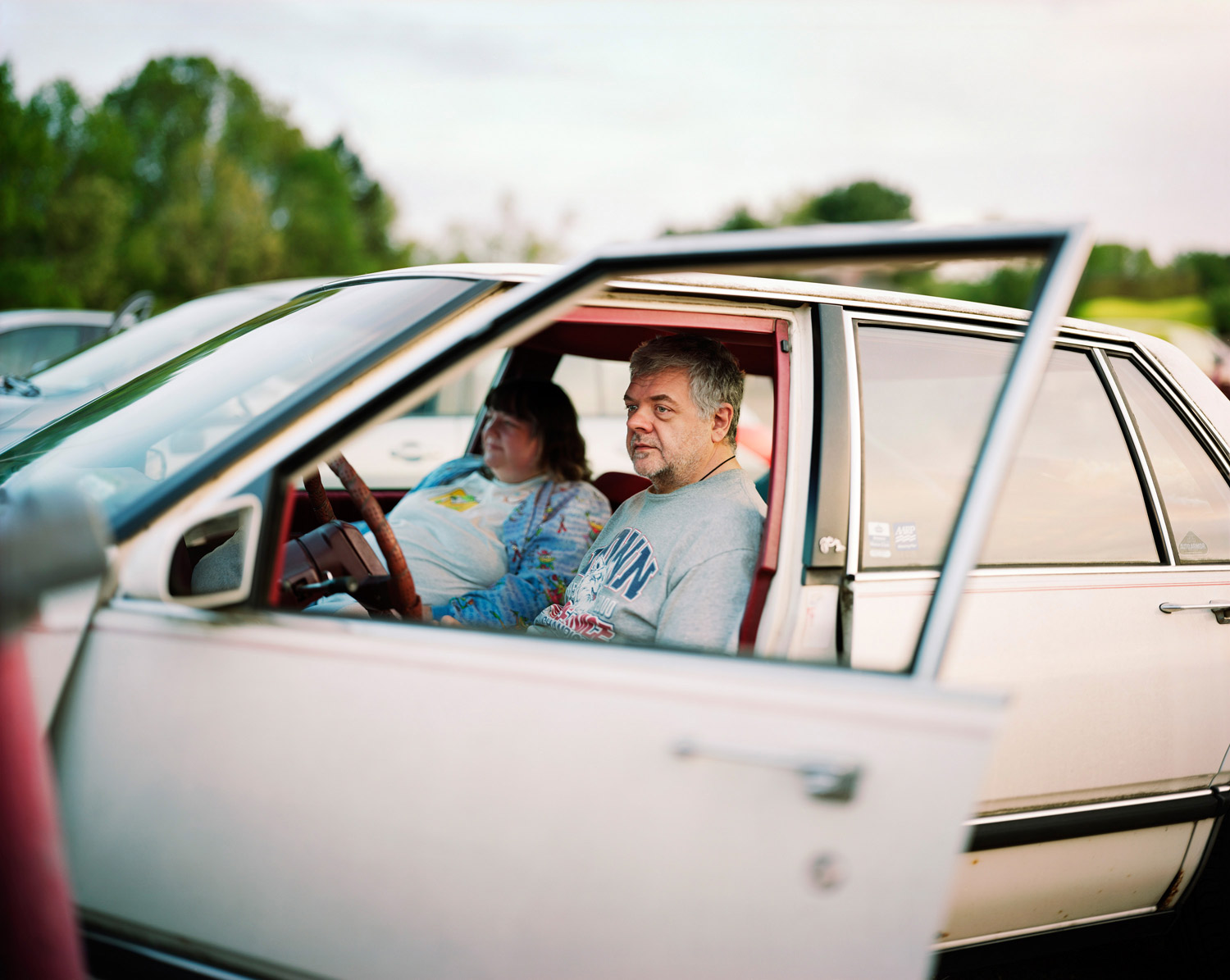
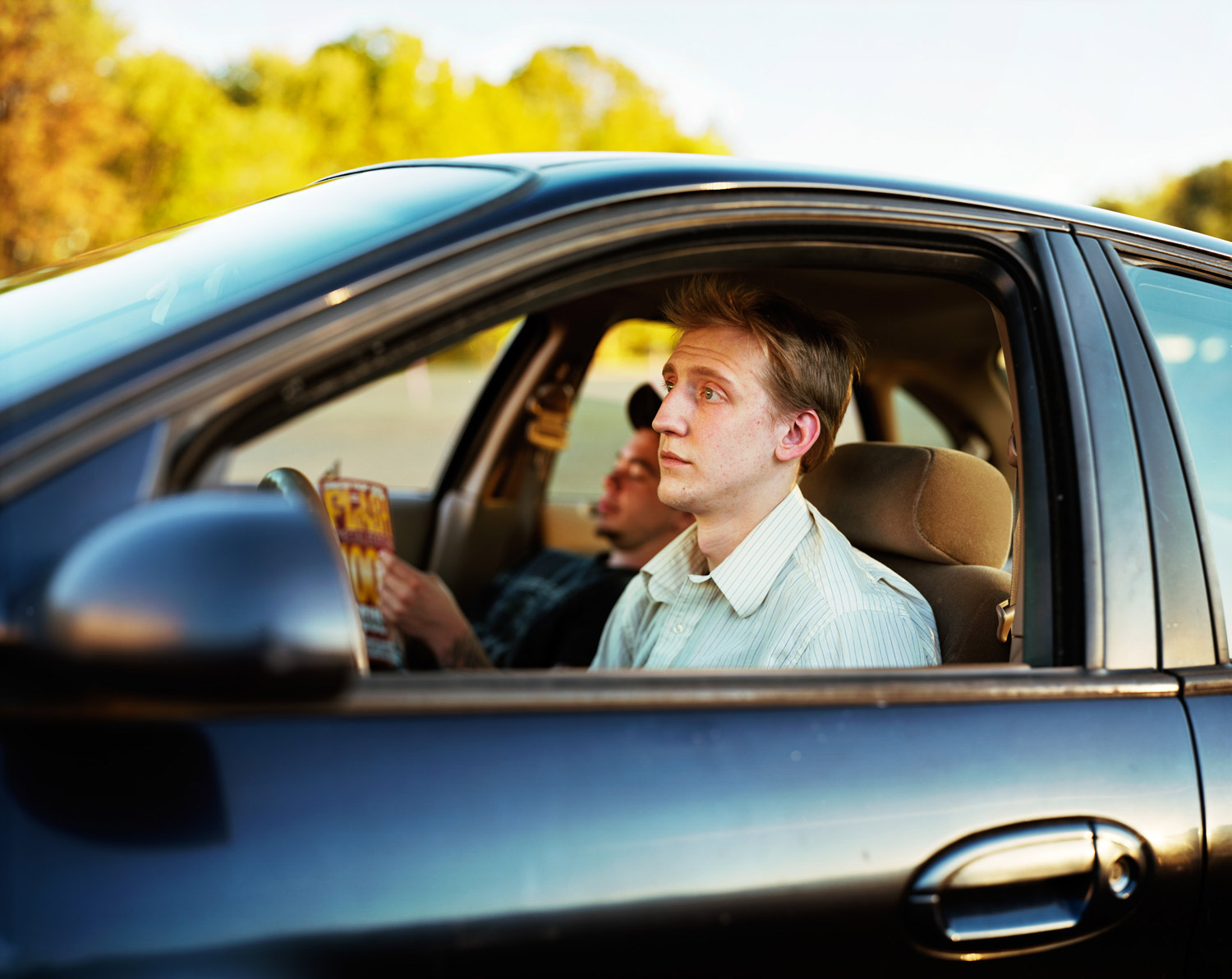
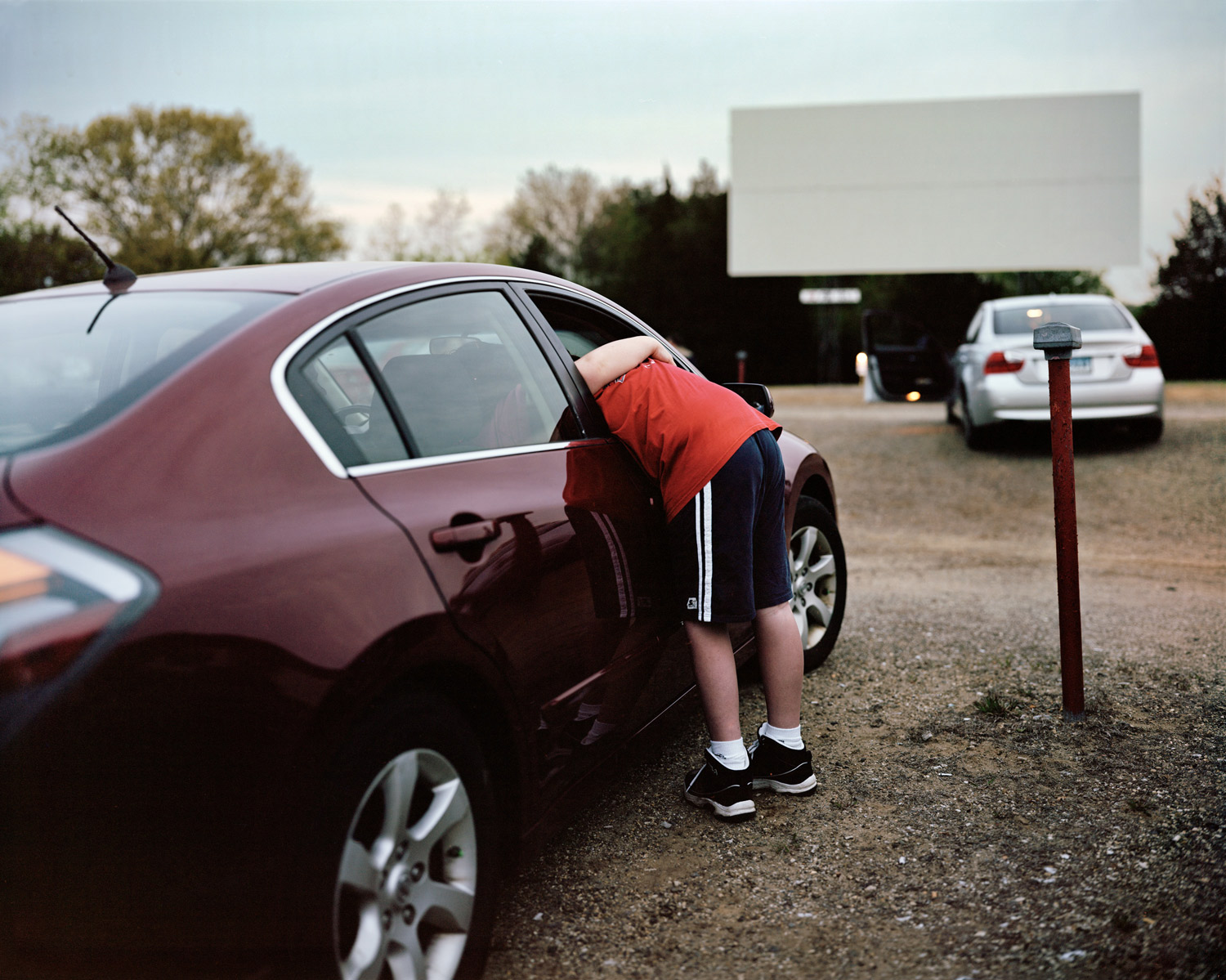

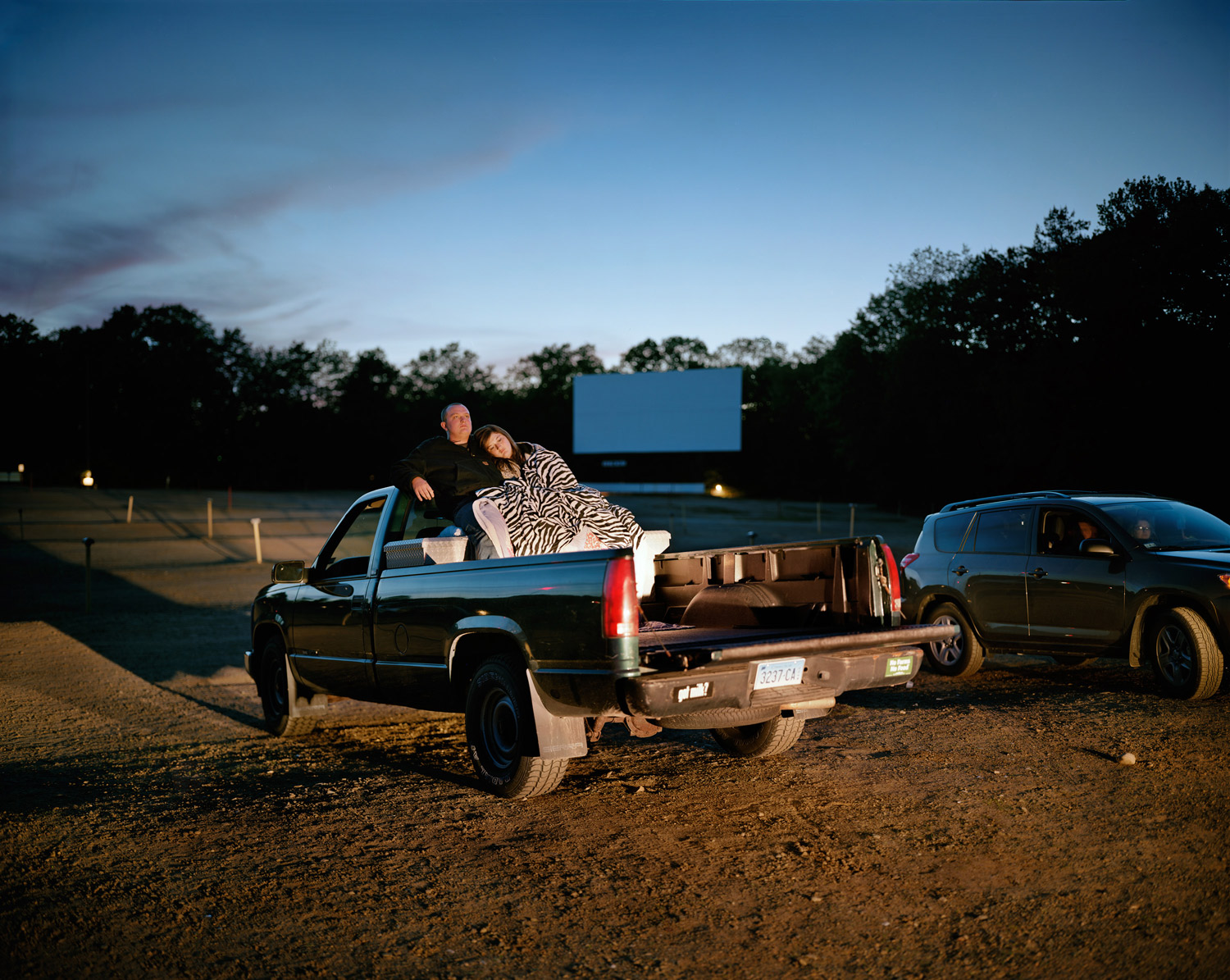
More Must-Reads from TIME
- Cybersecurity Experts Are Sounding the Alarm on DOGE
- Meet the 2025 Women of the Year
- The Harsh Truth About Disability Inclusion
- Why Do More Young Adults Have Cancer?
- Colman Domingo Leads With Radical Love
- How to Get Better at Doing Things Alone
- Michelle Zauner Stares Down the Darkness
Contact us at letters@time.com